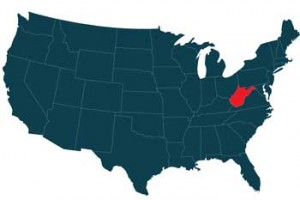West Virginia Emergency Vehicle Light State Statutes
 In West Virginia, emergency vehicle light usage is outlined in the state statutes by color and role. The legislature outlines the color restrictions used for specific vehicles, situations, agencies, and agency members. Failing to observe these restrictions or improper use of emergency flashing warning lights on vehicles in the state of West Virginia can result in punishment by law enforcement.
In West Virginia, emergency vehicle light usage is outlined in the state statutes by color and role. The legislature outlines the color restrictions used for specific vehicles, situations, agencies, and agency members. Failing to observe these restrictions or improper use of emergency flashing warning lights on vehicles in the state of West Virginia can result in punishment by law enforcement.
Emergency Vehicles in West Virginia Defined
Emergency vehicles in West Virginia are defined in state statute 17C-1-6. According to this administrative law, an authorized emergency vehicle in the state of West Virginia is defined as a vehicle belonging to fire departments, properly chartered rescue squads, police departments, ambulance services, state, county or municipal agencies.
Emergency vehicles can also belong to privately owned ambulance services, tow truck services, wrecker services, flag car services, vehicles used to offer road services to other disabled vehicles, service vehicles belonging to a public service corporations, postal service vehicles, and those fitted with snow removal equipment. Authorized emergency vehicles in West Virginia can also be Class A vehicles (cars and trucks) belonging to members of ambulance services, members of properly chartered rescue squads, and all other emergency use vehicles designated by an agency responsible for the operation and control of such people or organizations.
In West Virginia, special permission can be obtained for tow trucks, wreckers, municipal trucks, county vehicles, public service corporation vehicles, vehicles used for snow removal, flag car services, and snow plows to use emergency lights.
West Virginia Emergency Light Laws: Defined Light Colors For Each Vehicle Type
Police Lights
Only the police in West Virginia have the authorization to use flashing blue emergency vehicle lights under state statute 17C-15-26(d)(1). Permission for blue police lights is given by the chief administrative officer of the individual police department.
Fire Truck Lights
Per West Virginia state statute 17C-15-26(d)(2), fire trucks are allowed to use red fire truck lights.
It's law in the United States that motorists must pull off to the left or right and stop when they become aware of the flashing lights of a fire truck approaching them. This is to ensure those agencies can reach those who need their help as quickly as possible. Flashing red lights are essential for the quick visibility of large vehicles like fire trucks that have to navigate the highway quickly to reach those in need of aid.
Volunteer Fire Fighter Lights
Per West Virginia state statute 17C-15-26(d)(2), volunteer firefighters and EMS workers may also use red flashing warning lights on privately-owned vehicles.
Ambulance Lights
Ambulances are allowed to use red flashing lights according to West Virginia state statute 17C-15-26(d)(2),
It's law in the United States that motorists must pull off to the left or right and stop when they become aware of the red flashing lights of an approaching ambulance. This helps the ambulance arrive as quickly as possible to assist those in need. Flashing lights are essential in ensuring the safety of ambulance and EMT drivers, patients, and family members that are being transported.
Tow Trucks Lights
According to West Virginia state statute 17C-15-26(d)(2), tow trucks are authorized to use amber or yellow flashing emergency vehicle lights. These lights are authorized for use during road service to disabled vehicles and are designated by the sheriff of the resident county.
Construction Vehicle Lights
 Per West Virginia state statute 17C-15-26(d)(2), construction vehicles are authorized to use amber or yellow flashing emergency vehicle lights.
Per West Virginia state statute 17C-15-26(d)(2), construction vehicles are authorized to use amber or yellow flashing emergency vehicle lights.
Utility Vehicle Lights
West Virginia state statute 17C-15-26(d)(2) allows utility vehicles, like service vehicles of a public service corporation, such as power trucks, the use of amber or yellow flashing emergency lights.
It should be noted that for vehicles transporting solid waste, strobe lights may be installed on the roof not to exceed a third of the body's length forward from the rear of the edge of the roof. There should be a single clear lens emitting light 360 degrees around the vertical axis not to go above the roof more than 6 1/2 inches. Further, a pilot light and manual switch must be integrated to show the light is in operation.
Pilot Vehicle Light
For pilot vehicles in West Virginia, meaning those vehicles that escort oversized loads on the highways, state statute 17C-15-26(d)(2) allows the use of amber or yellow flashing emergency lights.
According to state regulations, any pilot vehicle in the state must use rotating or strobe lights of amber color. There must be an acrylic, glass, or plastic covering used with the light and visibility of at least 500 feet is required. There must also be 360 degrees of coverage for the light.
Security Vehicle Lights
For security vehicles, like the vehicles one sees monitoring mall parking lots, per state statute 17C-15-26(d)(2) they must use amber or yellow flashing emergency lights.
More information on emergency lights designated for vehicle use in West Virginia can be obtained by calling the State Highway Patrol office at 304-746-2100 or at the West Virginia Legislature website at http://wvlegislature.gov.
For more information about what lights may be available to you, we suggest calling your State Highway Patrol office at: 304-746-2100
*Please note that these numbers are what we are currently able to find and the numbers may have changed since this listing.
Disclaimer: The emergency vehicle light state statute guide was created by Extreme Tactical Dynamics as a guide and reference. We make no claim to the accuracy or validity of this guide. This guide was written to the best of our knowledge and has been provided to our customers as a courtesy ONLY! The information in this guide is our interpretation of the law as we have read it. We cannot be held responsible for any errors as this is only our interpretation of the law and the laws are constantly changing. We cannot be held liable or responsible for any errors and recommend that our customers refer to their local authorities to confirm the particular statue that governs their use of emergency vehicle lights.


